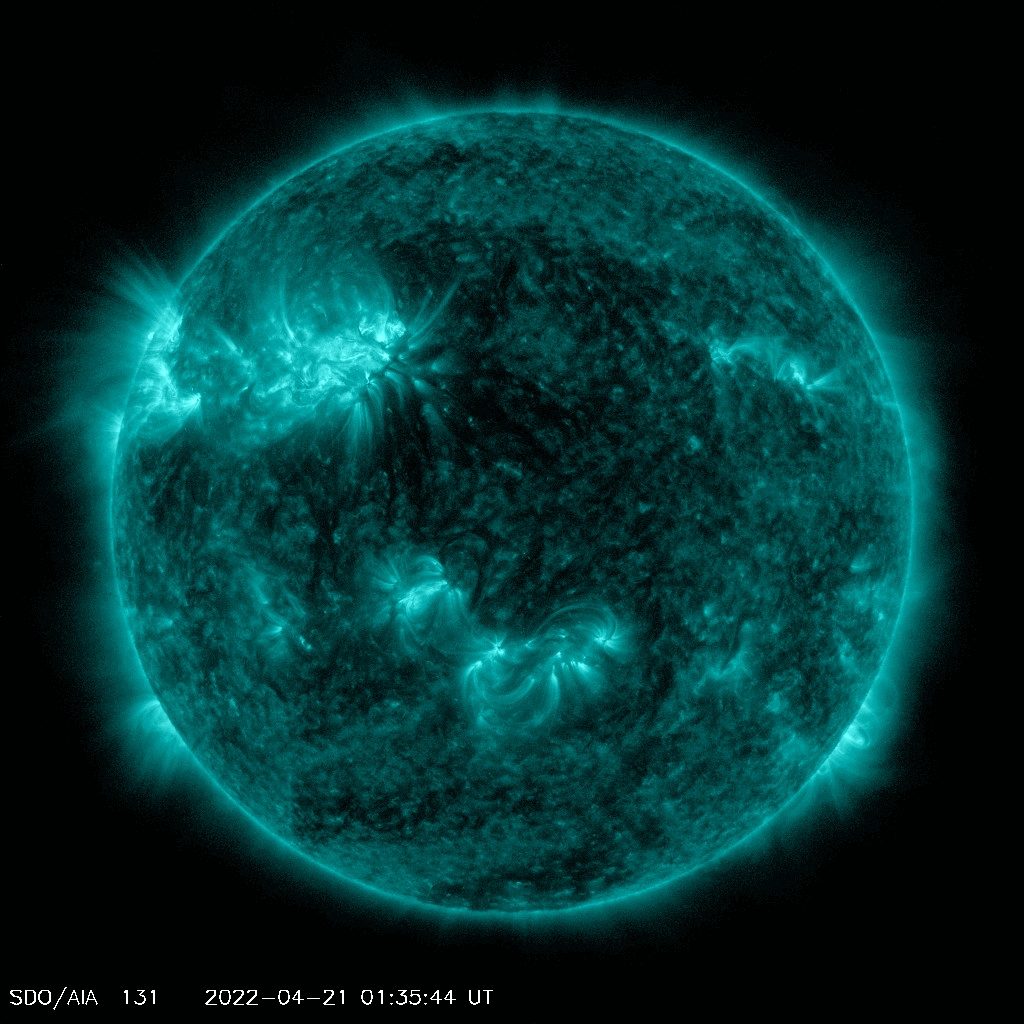A huge eruption on the surface of the sun may have sent a solar storm hurtling towards Earth.
Scientists are now working to determine if a potentially disruptive cloud of solar particles is headed toward Earth after a strong solar flare erupted from the sun late on Wednesday night.
The solar flare burst out of an area of the sun known as Region 2993—which is facing in the direction of Earth—at around 9:59 p.m. ET. The flare was classed as an M9.6 flare, meaning it just barely fell short of the most powerful X-class of solar flares.
Still, the flare was at the very upper end of what can be classed as an M-class flare—the second-strongest type.
“And so it begins,” tweeted Alex Young, a solar scientist at NASA, who suggested there could be “lots more action” from the 2993 region.
And so it begins! An almost X, M9.6 from AR2993! Let the rumbles begin and lots more action from the AR2993/2994 complex. ???? pic.twitter.com/zP9gDqtwD5
— Dr. C. Alex Young (@TheSunToday) April 21, 2022
Space weather detectors captured radio signals associated with the flare that suggest the explosion was accompanied by something called a coronal mass ejection (CME)—a vast cloud of charged solar particles that can interfere with electronics here on Earth if they’re strong enough.
As of Thursday morning, the National Oceanic and Atmospheric Administration’s Space Weather Prediction Center (SWPC) said it was still working to determine the likelihood of an Earth impact.
Solar flares can provide clues as to when a CME might strike. Light and other radiation from solar flares travel at the speed of light and tends to arrive at Earth just minutes after the event. CMEs travel much more slowly, potentially taking days before they arrive.
If a CME impacts Earth it can cause a geomagnetic storm, which is a major disturbance of the Earth’s magnetic field. During a geomagnetic storm, harmful electrical currents can be produced in power grid systems, satellites can experience increased drag as they orbit the Earth, and radio communications and guidance systems can be disrupted. They can also produce the dazzling auroras known as the Northern and Southern Lights.

CMEs are relatively common and occur several times per year. It is uncommon for them to be strong enough to be widely disruptive—geomagnetic storms are classed on a ‘G’ scale of 1 to 5 and are almost always a G3 or below—but they can be.
Earlier this year a CME was thought to have been responsible for the destruction of a number of internet satellites operated by U.S. rocket company SpaceX after they fell out of orbit.
Disruptive or not, we can expect to see an increasing number of CMEs and other space weather events in the coming months and years as the sun is currently in the increasingly active period of its roughly 11-year solar cycle.
 Alghadeer TV Alghadeer TV
Alghadeer TV Alghadeer TV
